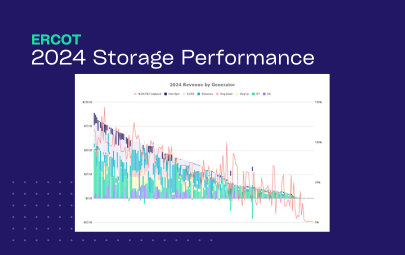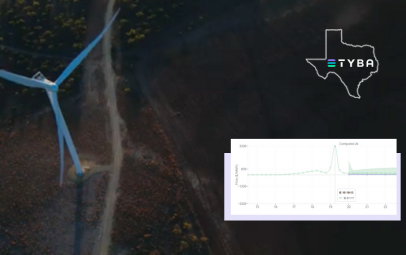January Cold Snap
For the second year in a row, extreme mid-January cold in Texas has led to morning spikes in electricity demand. In both 2024 and 2025, there was a day when ERCOT saw demand of ~78GW, which is record-breaking for winter in ERCOT. While these extreme weather and energy demand conditions were similar, energy prices looked very different year-over-year.
-
~78GW
Peak electricity demandOn the mornings of 01/16/24 and 01/22/25
-
95%
Lower energy pricesIn 2025, in-part due to an increase in storage availability
-
5x
Higher available capacityWith >10GW available to SCED in 2025 (compared to <2GW in 2024), reserve margins were significantly higher
January 16, 2024
On January 16, 2024, energy prices in ERCOT’s West Load Zone soared above $2,000/MWh in the Day-Ahead Market during the critical 7-8 AM hour. Prices for Ancillary Services products also spiked, all clearing above $1,000/MW at some point before noon.
In this context, the highest performing strategies leaned heavily on stacking Ancillary Service positions to ensure the asset was maximizing revenue.
January 22, 2025
Fast forward one year, and ERCOT faced a nearly identical situation on January 22, 2025. Load again neared 78GW in the morning hours, with demand peaking between 7-8 AM. Yet, this time, energy prices barely reached $75-100/MWh, and no AS product surpassed $45/MW — a dramatic difference from the prior year.
One major difference? Batteries. Over the past year, ERCOT’s energy storage capacity doubled. This allowed for a sufficient reserve margin, in addition to the ~2.5GW of storage that was discharging 7-8am when demand was peaking. Together, this created grid stability and price stability.
This shift points to a crucial reality for storage operators:
- Accurate forecasts are imperative to determine the most valuable opportunities and ensure you are choosing the right product at the right times.
- Grid conditions are changing fast. With growing storage penetration, bidding strategies must continuously evolve to maximize returns in a more dynamic market.





